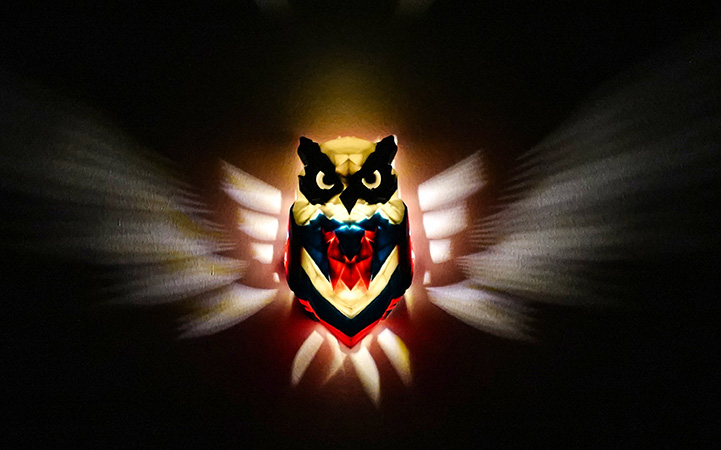
Our Journey Through The Night Lamp Creation
DIY and 3D Printing enthusiasts, this one is for you! Through our research, we have decided to print something different and reflect our brand. We have come up with the idea of printing an owl-shaped night lamp to light our nights.
Challenge accepted!
Our journey began with excitement as we set up a vibrant, multi-color ABS print. Thanks to the Filasophia products, objects stuck very well to the build plate during the 48 hours of the printing process. BUT, there were some challenges along the way.
Everything seemed perfect until an unexpected crack appeared, intriguingly right at the layer where we had paused the print. This sudden development threw a wrench into our smooth-sailing operation.
A Few Hiccups Along the Way
We were left wondering about several potential factors:
Print Speed: Perhaps our speed was a bit too ambitious. If layers are laid down too quickly, they might not bond properly.
Cooling Fan: The fan might have been overactive, causing the layers to cool and solidify too rapidly.
Low Nozzle Temperature : If the printing temperature is too low, the ABS filament may not reach the necessary heat level for proper melting, causing layer seperation and splitting.
Low Flow Rate: A low flow rate can result in under-extrusion, leading to insufficient plastic for layers to merge effectively.
The Spaghetti Incident! Not So Yummy!
In an unexpected twist, our printer decided to create some 'spaghetti' mid-print, leading to a pause. Managing this remotely presented its own set of challenges, potentially contributing to the problem.


Starts, Stops, and Infill Choices
The frequent pauses and restarts could have led to inconsistencies in extrusion, a plausible cause for the crack. In our attempt to understand and replicate the issue, we initiated a test print but inadvertently changed from a concentric to a rectilinear infill. This shift in infill patterns, not matching our original setup, could have significantly impacted the structural integrity of the print. Concentric infills, being more continuous, might be more affected by interruptions like pauses, while rectilinear patterns offer more support and stability.
Over to You, Friends
We've shared our observations and now look to you for insights. Have you encountered similar challenges? What solutions or theories do you have? Let's collaborate and solve these 3D printing puzzles together.
Every misprint or challenge is a learning opportunity, bringing us closer to mastering the art of 3D printing. Let's keep exploring, sharing, and growing in this amazing journey of creation and discovery.
Visit stlflix.com to download Owl Lamp


